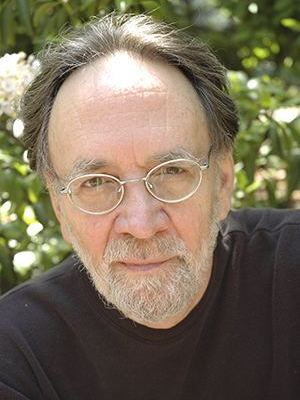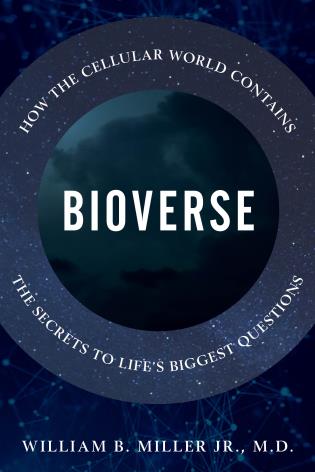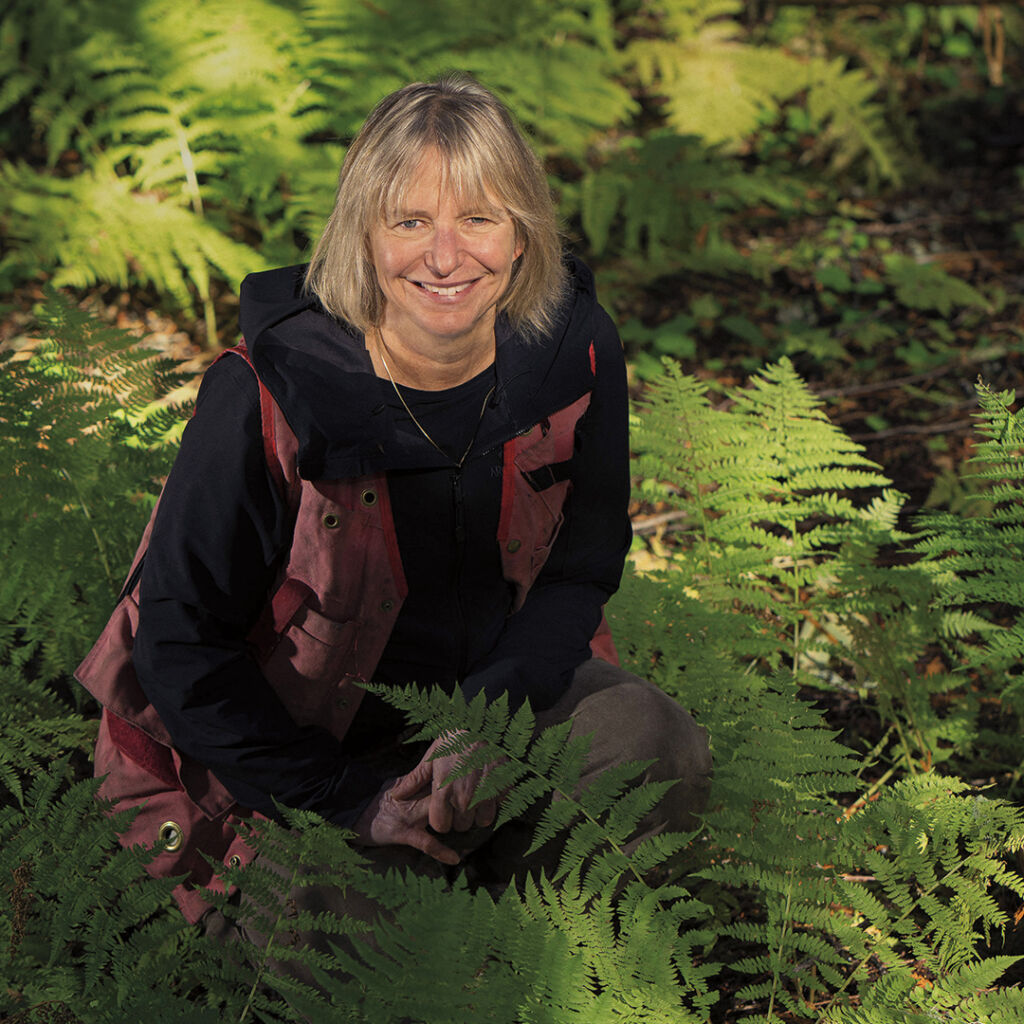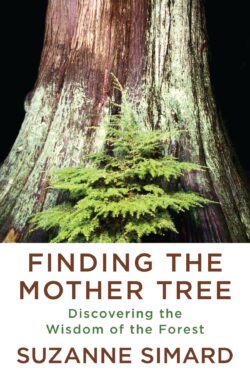Transformation, on a cellular level
The Sentient Cell: The Cellular Foundations of Consciousness
by Arthur S. Reber, Frantisek Baluska and William B. Miller Jr.
Oxford, UK: Oxford University Press, 2023
$78.00 / 9780198873211
Reviewed by Loys Maingon
*

Every biologist interested in the history of science and evolution of ideas has at some point had to wonder at the Victorian reaction to the publication of The Origin of Species.Today one wonders even more at the endurance of creationism when one century after the 1925 Scopes trial, both American and Canadian right-wing politicians overtly voice biblicist creationist views and pass laws reintroducing the teaching of creationism. We know from Darwin’s diaries that he beamed when he overheard a train station bookseller extol the importance of his book that was already out of print within weeks of its first release. The Sentient Cell by Arthur S. Reber, Frantisek Baluska, and William B. Miller Jr., (released through Oxford University Press in the USA in January 2024) was also already out of print mid-May. Both books mark important watershed moments in an ideological and social revolution, and a turning point in science.
The Origin of Species and The Sentient Cell both affect our relationship with nature and our understanding of the social and economic orders. Both books question and banish the illusion of human uniqueness and primacy from public discourse based on meticulous solid science. As The Origin of Species before it, The Sentient Cell is firmly grounded in evolutionary science, and it will be vigorously opposed by the same pseudo-rational dogmatism and prejudice, only to make way for a paradigm shift. Written by Dr. Arthur Reber, Affiliate Professor of Psychology at UBC, Dr. Frantisek Bakuska, retired chair of Cellular and Molecular Botany at the University of Bonn and Dr. William B. Miller, bio-medical researcher at the University of Arizona, The Sentient Cell was conceived at a conference on “Other Minds” at the Université de Laval in Québec in the summer of 2018. It is therefore a British Columbian and Canadian-based effort furthering the work of Dr. Suzanne Simard’s global neuroscience colleagues, written from an unprecedented range of expertise and solid peer-reviewed science.

The premise of The Sentient Cell is that “life and mind are co-terminous.” Where there is life there is consciousness. Based on the norms established to determine whether an individual being is conscious: the ability to have valenced experiences, to self-reference, to be self-aware, to organize and assess information, to communicate, to learn, to develop a memory, to make decisions, to problem solve and to exhibit preferential choices, every cell, be it prokaryotic or eukaryotic, exhibits a form of consciousness appropriate to the limits of its life-form. In other words, if only because a cell’s experience of the world is not the experience of a human being, the consciousness of a cell is not human consciousness. It nevertheless represents an evolutionary building block in the development of the consciousness of complex multicellular organisms, of which human consciousness is only one interesting variation and evolutionary product, but not necessarily a pinnacle.
The implication of the premise is that consciousness is co-terminous with all life that evolved once four billion years ago from the original cell, be it single multicellular organisms or multi-species super-organisms. The multicellularity of life begins with the necessary symbiosis of aggregations of microbial organisms, as in microbial mats. In microbial mats cellular life is known to self-organize symbiotically in order to maintain optimal environmental conditions by continuously exchanging signals and information which individual cells have to process in order to make decisions and choices necessary to their survival in the surrounding adverse environment outside of the cell wall. The plasma membrane serves not just as a boundary, but as a complex sensing and informational organ.

Multicellular species are an evolution of this condition of life. As Miller has often pointed out in previous works such as Bioverse: How the Cellular World Contains the Secrets to Life’s Biggest Questions, although humans define themselves as eukaryotic organisms, our eukaryotic cells make up only one-tenth of our body. The other nine-tenths we tacitly ignore because it complicates our mechanistic models of how the body functions, consists of microbial populations. We are 90% microbes, and yet define ourselves as eukaryotes: it is a choice. These obligatory microbial populations are not separate from eukaryotic function, they are necessary partners in the symbiosis of life. Each microbial population is specific to each organ, and unique to each individual. Every individual has a unique microflora. The eukaryotic cells of every organ interact with local microbial populations, including the brain, the classical seat of consciousness. Cells do not act in isolation from their microbial ecosystems. It is an obligatory relationship that defines us. The symbiotic activity of the microbiome is essential to our health. At the most basic level our gut flora and microbiome directly affect our brain function, our moods, thoughts, and health, through its interactions with our eukaryotic cells and neural system. We do think through our guts.

That is where the most contentious aspects of the account given by Reber, Baluska, and Miller may lie. It poses a challenge to the Neo-Darwinian paradigm that has prevailed for the last half century. (For full disclosure, this reviewer is a confirmed Neo-Darwinist, hopefully with an open mind.) The notion of “the selfish gene,” which Richard Dawkins did much to popularize in the 1970s, builds on a classical view of Crick’s “central dogma” which posits genes as the controllers of cellular processes. Indeed, in spite of many discoveries challenging Crick’s “central dogma,” much genomic research continues to work within that framework. Reber, Baluska, and Miller challenge this by suggesting that the real control lies not in the genome, but in the senome, the environmental informational sensing and communicating proteins embedded in the plasma membrane. For Reber, Baluska, and Miller genes are really archives of information gathered by the senome that serve as templates. Genes are tools of the cell, which serve as master templates and which can be modified or re-purposed, as they are known to be, by the cell. The intelligent cell is therefore an individual, not an automaton, in the same way that Descartes’ dog gains in agency in real life. The view of the cell propounded by Reber, Baluska, and Miller is that the cell is not a simple machine as assumed by Dawkins and Dennett, but a very individual and varied dynamic process.

As Darwin before them, Reber, Baluska, and Miller begin from the standpoint that to understand the logic of evolution we must begin from the bottom up with relatively simple units. Consciousness is not something that came about magically, just with humans. It is a feature of life whose complexity evolved together with life on this planet, and is indistinguishable from life. To try to argue, as philosophy has for the past centuries, that consciousness requires a complex nerve net is to remain mired in Descartes’ error that dogs were just automatons who feel no pain. Unsurprisingly, that is the same logic that slave-owners used to argue that slaves as “members of lesser races” felt less pain. The “neural net obsession” overlooks the actual tremendous complexity of both the prokaryotic and eukaryotic cell. To sustain the neural net argument, one has to discard the tremendous scientific strides in cell and molecular biology that has been made since the initial discovery of the double helix in 1951 by Crick, Franklin, Watson, and Wilkins.
That cells are not intelligent and that intelligence cannot exist at a cellular level has long been cast in doubt by the work of the late Dr. John Bonner (1920-2019). Bonner spent a lifetime studying myxogastria, colonial cellular amoebas, who are known to compute better than human engineers, demonstrate sociability, altruism, memory, problem solving and all the other requirements of consciousness. The Sentient Cell just brings together the overwhelming scientific evidence that has been accumulating over the past four decades. In the words of Philip Ball, the Science reviewer: “Reber and colleagues make a compelling case that prokaryotes and even individual cells in our own body regularly display behaviours that we should call, at the very least, intelligent. Nominally identical cells can show different responses to identical stimuli, in part because their internal states differ: They have memories of a kind, and so history matters.”1
A large part of the power of Reber et al.’s argument, which may escape the lay-reader, lies in that fact that it is grounded within a solid Darwinian evolutionary framework. It picks up and furthers the insights of Darwin on evolution and plant sentience. Although Darwin witnessed the early beginnings of “cell theory” by Theodore Schwann in 1838, it is only recently that molecular biologists have given consideration to the evolution of the cell itself. Cell evolution is central to Reber et al.’s arguments. The evolution of the cell is “co-terminous” with the evolution of consciousness because the plasma membrane serves to sense an unknown universe that threatens the survival of the cell. Life is a process of working to offset entropy. The cell therefore has to constantly gather and interpret information, in symbiosis with its surrounding biome of cells and microbes in order to maintain its internal state and gather energy to offset entropy.
The information that the cell gathers, unlike artificial intelligence (AI), is beset with doubt. To resolve uncertainties as to what it needs to do to maintain an internal balance and offset the entropy of the external universe the cell needs to be constantly exchanging and checking information with other cells and microbes, as microbiologists all know when they observe cell ”chatter.” As all organisms that together make up an environment’s biota, there has to be constant cooperative chemical and acoustic signalling, as first discovered in 1983 by Dr. David Rhoades in a study of willow responses to a tent caterpillar attack. In what has proven to be the seminal paper that gave birth to plant neuroscience, Rhoades reported and convincingly demonstrated that trees attacked signalled chemically to trees downwind using pheromones. This resulted in the the discovery of the cellular production of methyl jasmonate which makes willow foliage unpalatable to tent caterpillars, in anticipation of a tent caterpillar attack by trees as far as one kilometre away.2 There must therefore be a high degree of constant cooperation and symbiosis between plants at different scales, as is also observed now at a cellular level.
There lies the point. Reber and colleagues present a robust case based on the weight of evidence that compels us to change our dominant view of nature as just a set of “resources” for an economy that is has brought humanity and the planet to the brink. However, no matter how robust the case, it will always be subject to the same dogmatic obstructiveness and criticism that was repeatedly used by the opponents of Darwin, and which we recently saw surface once again in a recent academic critique of Dr. Suzanne Simard’s work. There will always be someone to claim that good work is not rigorous enough, that the statistics are shoddy, that not enough work has been done or that maybe what was observed was an exception inconvenient to the rule of business interests, and therefore in obvious need of more studies, to delay the onset of reality.

We should by now be wise to this time-dishonoured logic of deception and obfuscation.
Humanity has witnessed that same logic over the last four decades in the corporate-driven criticism of climate change science. The proof, as the saying goes, is now in the pudding, in the floods and the fires that we all witness first hand, as 77% of climate scientists doubt that we will be able to keep climate change below 2.5C.3 We are failing to stay below the 1.5C boundary because we collectively fail to appreciate the importance of the continuity and unity of life on this planet. We persist in living as though nature were just a bunch of fixed resources resilient to our economic depredation. In this, we seem to have failed to appreciate the essence of Darwin’s message that evolution is the account of the unity of life in which man is neither separate nor superior. We prefer to perpetuate biblical creationist notions in economic adumbrations of the same worn logic. Life on Earth is a fragile web of biodiversity. Some scientists working for industry and government seem to continue to be unaware of the practical implications of evolution. If Simard’s Finding The Mother Tree: Discovering the Wisdom of the Forest gave them palpitations, The Sentient Cell will give them a full-blown heart attack.

Though science focuses on “facts,” science is really only understandable in its historical and social context. To understand Darwin and the importance of The Sentient Cell, it pays to remember that before William Whewell coined the name “scientist” in 1834, there were no “scientists,” only “natural philosophers” and “naturalists.” What we know today as “science” was an amorphous natural philosophy often written as poetry or in verse before 1834. We too easily forget that even the hard mathematics of the alchemist Isaac Newton’s Philosophiæ Naturalis Principia Mathematica reads as poetry. Yet, that poetry, that enchantment of nature, described in minimalist calculus, would revolutionize physics and create our modern world.
By definition, good science challenges dogmatic paradigms. Corporate science is just dogmatic paradigms. To understand the revolution that The Sentient Cell ushers, it is useful to take into account the historical parallels between The Origin of Species and The Sentient Cell, and consider how they are rooted in two divergent views of Western science and the social order. Recently, Jason Roberts in Every Living Thing: The Great and Deadly Race to Know all Life has done a magnificent job at documenting the historical origins of The Origin of Species in the debate and rivalry between the Count de Buffon and Carl von Linnaeus on how the world is ordered.
That debate is what continues to underlie the current controversy that surrounds “plant neuroscience” and the research behind The Sentient Cell and Finding The Mother Tree. It is an old debate made fresh because it inconveniences conservative right-thinking people.The science is sound and peer-reviewed, no matter what detractors may wish to invoke. When detractors malign Simard, as they undoubtedly will Reber, Baluska, and Miller, and by extension the field of plant neuroscience as “a socialist fantasy,”4 they bring to mind Thomas Huxley’s reply to Bishop Wilberforce’s malicious defamation of Darwin: “I would rather have a miserable ape for a grandfather than a man highly endowed by nature and possessed of great means of influence and yet employs these faculties and that influence for the purpose of introducing ridicule into a grave scientific discussion, I unhesitatingly affirm my preference for the ape.” The controversy is really about the politics and economics, not the science, so it is worth a re-visit to gain political hindsight.
For most of his life Carl Linnaeus (1707-1788), the son of a rural Lutheran pastor, held the belief that the world was home to a fixed number of species pre-ordained by God’s creation to be exactly 4,000 species. That is about the number of species a well-trained biology student can find in a year in a patch of intact forest ecosystem. Today global biodiversity suggests that there are over 5 million species. Linnaeus’ sense of fixity was coupled with a firm belief in the hierarchy of species in which man, specifically white men (not women), stood just below God to rule over creation. As even the Linnaean Society notes: “One of the origins of scientific racism can be traced to Linnaeus’work on the classification of man, which had devastating and far-reaching consequences for humanity.”5 Notwithstanding the taxonomic usefulness of his binary classification system, Linnaeus gave rise to a utilitarian branch of science that came to dominate in industrialized countries and their colonial empires in the nineteenth and twentieth centuries. The popularity of Linnaeus’ reasoning and the ability it created to classify abstracts gave license to the indiscriminate economic pillage of the planet which continuous to this day.
Linnaeus’ opponent was the French mathematician, Georges Louis Leclerc, Comte de Buffon (1707-1788). De Buffon argued in his Histoire Naturelle, that life was an evolving continuum without real hierarchies and with an almost infinite and continuously changing variation of species. For Buffon and his followers, there were really no representative “holotypes,” abstracts used to classify were just arbitrary fictions in the larger reality of life’s continuum. He was a feminist before his time, and a vehement abolitionist as were Darwin and von Humboldt. His writings had a tremendous influence on Darwin’s grandfather, Erasmus Darwin, whose poem Zoonomiascandalized the English society of his time by suggesting that all species were not a product of special creation, but simply derived from a common accidental ancestor. Charles Darwin would note in subsequent editions of The Origin of Species that Buffon’s ideas were “Laughably like mine a hundred years before.” Buffon himself noted that his ideas went back to Thales and Anaximander and could be found in the works of the sixteenth and seventeenth-century naturalists. Buffon was the inspiration for much of Alexander von Humboldt whose writings were part of Darwin’s library on The Voyage of the Beagle. There has therefore always been an alternative, inclusive and very progressive current in Western science and culture in which nature has always been very much understood to be sentient. The nineteenth and twentieth-century economic dogma that nature is just a storehouse of resources for the marketplace is at best a cultural aberration.
The ideas propounded in The Sentient Cell are very much consistent with the lineage of Buffon, von Humboldt and Darwin, as are Suzanne Simard’s. They are part of a historical continuity of progressive scientific thought that has always contended that nature is very much alive and sentient, and that human beings are an integral part of nature. The corollary is that this imposes social and moral obligations, many of which are inconsistent with the ethos of a society obsessed with an economy of endless growth for which nature is just a set of fixed resources to be despoiled.
The reaction to The Sentient Cell is likely to be similar to the reaction to The Origin of Species, because it challenges our preconceptions and vested interests. The conservative mainstream press misrepresented and derided Darwin and the ideas he took pains to expound in The Origin of Species. One hundred and fifty years on it is sure to do the same again today vis-à-vis The Sentient Cell.As it is well documented, the university establishment then was as entrenched in the dogma of the Church of England, as our universities are today in the dogma of forest corporations and business schools, it gave Darwin a hostile reception, with the same smugness, the same appeal to reason, and on the same grounds that the burgeoning field of “plant neuroscience” receives today. The dogma never really changes. It merely fades, only to re-appear as another morph of the times.
The Sentient Cell comes at a timely moment, when the scientific consensus tells us that tipping points loom, and our options are narrowing quickly. It is increasingly obvious that the climate crisis is indistinguishable from the biodiversity crisis, and science calls repeatedly for “transformational change.” An electric car is substitute transportation in the same economy, not really a “transformational change.” An informed understanding that life and consciousness are co-terminous is transformational. It questions the basic assumptions of our economies and politics. The Sentient Cell therefore presents an essential intellectual framework that reconnects us to the best of the Western scientific tradition. It provides an intellectual pathway to reorganize our relationship with our life-support system. This is an essential transformational book for present and future generations, and for real and meaningful cross-cultural reconciliation.
It changes everything, once again.
*

A graduate of the universities of St. Andrews, UBC, and Saskatchewan, Dr. Loys Maingon first taught environmental studies in 1986. An avid naturalist and a registered professional biologist, he is past president of the Comox Valley Naturalists and current webinar host for the Canadian Society of Environmental Biologists. From his home on the Tsolum River near Merville, he owns and operates an endangered plant nursery and oversees a number of regional conservation and heritage programmes. He is also Research Director of the Strathcona Wilderness Institute and does environmental consulting. Arrested at Clayoquot Sound in 1993, Loys remains a strong advocate for social, economic, and environmental change. He contributed a chapter to Clayoquot & Dissent (Ronsdale Press: 1994), and authored Field Guide to Basic Lichens of Strathcona Park (Strathcona Wilderness Institute Press: 2022).
[Editor’s note: Dr. Loys Maingon has reviewed books by Peter R. Grant, Joel Bakan, Melissa Aronczyk & Maria I. Espinoza, William K. Carroll (ed.), Philippe D. Tortell (editor), Daniel Pauly, Collin Varner, and Peter Wohlleben (The Secret Wisdom of Nature and The Hidden Life of Trees) for The British Columbia Review.]
*
The British Columbia Review
Interim Editors, 2023-25: Trevor Marc Hughes (non-fiction), Brett Josef Grubisic (fiction and poetry)
Publisher: Richard Mackie
Formerly The Ormsby Review, The British Columbia Review is an online book review and journal service for BC writers and readers. The Advisory Board now consists of Jean Barman, Wade Davis, Robin Fisher, Barry Gough, Hugh Johnston, Kathy Mezei, Patricia Roy, Maria Tippett, and Graeme Wynn. Provincial Government Patron (since September 2018): Creative BC. Honorary Patron: Yosef Wosk. Scholarly Patron: SFU Graduate Liberal Studies. The British Columbia Review was founded in 2016 by Richard Mackie and Alan Twigg.
“Only connect.” – E.M. Forster
*
- Philip Ball “In search of sentience: A provocative proposition paves the way fo a long-overdue conversation about consciousness”. Science (15 March 2024: Vol 383 Issue 6688) p. 1186 ↩︎
- David F. Rhoades (1983) . “Responses of Alder and Willow to Attack by Tent Caterpillarb Webworms: Evidence of Pheromonal Sensitivity of Willows.” Plant Resistance to Insects Chapter 4 pp.55-68 ACS Symposium Vol. 208 ↩︎
- https://www.theguardian.com/environment/article/2024/may/08/world-scientists-climate-failure-survey-global-temperature ↩︎
- https://www.theguardian.com/environment/2024/apr/23/mother-trees-and-socialist-forests-is-the-wood-wide-web-a-fantasy ↩︎
- https://www.linnean.org/learning/who-was-linnaeus/linnaeus-and-race ↩︎
One comment on “Transformation, on a cellular level”